Have you ever thought whether the food you give your dog is as healthy as possible? Raw food diets are gaining popularity among many pet owners, and this is both exciting and worrying. This guide will discuss the raw diet trend and its advantages and dangers, and whether it is appropriate to feed your dog.
The raw diet movement, which was popularized by Australian veterinarian Ian Billinghurst in the 1990s, emphasizes the feeding of dogs with unprocessed foods such as meat, bones, fruits and vegetables. Its supporters claim that it resembles the natural eating behavior of a dog, which leads to healthier coats and digestion. Nevertheless, opponents point out such dangers as bacterial contamination and nutritional imbalances.
In this article, we will explore the history of raw feeding, the advantages and disadvantages of raw feeding, and expert advice to enable you to make informed choices. As an inquisitive pet owner or one thinking of switching, this guide provides a middle ground to aid the well-being of your dog.
Understanding the Raw Diet Movement for Dogs
The raw diet movement has become popular as pet owners want more natural ways of feeding. This diet is centered on raw foods such as meat, bones, fruits and vegetables, which are similar to what wild canines may consume. The origins of the movement can be found in racing greyhounds and sled dogs, where raw feeding was used to enhance performance. This practice has over the years spread to pets in the family as owners saw the possible health gains.
The Evolution of Raw Feeding Practices
Raw feeding is historically used to improve the performance of working dogs. It is now embraced by a large number of people due to its perceived health benefits. The change is part of a larger movement toward natural, less processed pet food.
The Origins of the BARF Diet
Australian veterinarian Ian Billinghurst developed the BARF (Bones and Raw Food) diet in 1993. He said that raw meat and vegetables were healthier than the commercial dog food. His work criticized the traditional pet food formulations and shaped the current raw feeding movement.
Billinghurst’s ideas resonated with pet owners seeking natural alternatives. His book was a foundation of the raw feeding movement, which focuses on how to best replicate the natural diet of dogs to achieve optimum health.
The raw diet movement today represents a movement towards more natural pet care. Although the arguments on its advantages are still going on, its popularity is an indication of the need to have healthier and less processed food to feed pets.
Benefits and Risks of Raw Dog Food
When deciding about a raw food diet of your pet, it is important to balance the possible benefits and the potential negatives. Most pet owners have testified to the health benefits of their pets, including shinier coats and increased energy levels. Nevertheless, it is important to take this diet seriously.
Potential Health Advantages
High-protein, high-fat diet may result in many health benefits. These are better skin, whiter teeth and more energy. Raw meals also have the potential to make the digestive system healthier due to the natural ingredients. Also, the owners observe smaller, less frequent stools, which may be more convenient to the pet and the owner.
Identifying Health Concerns and Risks
Although the benefits are possible, it is important to note that there are major risks involved. Bacterial contamination is also common and research indicates that most raw samples have harmful bacteria. Another issue is nutritional imbalances, since improperly planned diet may cause deficiencies. Also, entire bones may be a source of choking or internal injury. These are some of the risks that need to be addressed to make sure your pet is safe and healthy.
Essential Ingredients in a Raw Food Diet
An effective raw food diet of pets is centered on whole, raw foods that resemble what animals would eat in the wild. This diet usually consists of a combination of muscle meat, bones, and organ meat with smaller amounts of vegetables and eggs.
This diet is based on muscle meat that is a source of vital protein. Bones, especially raw and edible ones, add calcium and phosphorus, which are essential to healthy bones and teeth. The organ meat, such as liver and kidneys, provide essential vitamins and minerals, and raw eggs provide more protein and fatty acids.
Smaller amounts of vegetables like broccoli, spinach and celery are added to supply fiber and nutrients. This balanced combination is meant to imitate what the canines would consume in the wild, so that they get all the required nutrients without the loss that is incurred during cooking.
Raw meat feeding maintains the nutritional value that may be lost in the processing. All the ingredients contribute to the overall health, including shiny coats and healthy digestion. This is a natural way that is in line with the evolutionary needs of an animal and that ensures well-being due to wholesome and unprocessed foods.
How to Safely Transition Your Dog to Raw Foods
Switching your dog to a raw food diet is a wonderful idea to make your dog healthier, but it has to be planned. Vets and pet owners have reported such improvements as a shinier coat and fresher breath, so the key is to be cautious in order to prevent digestive problems or unbalanced nutrition.
Step-by-Step Transition Tips
A gradual transition is essential to prevent digestive upset. Begin by combining a little amount of raw food with the existing meals of your dog. A common approach is:
Day 1: 1/8 new food, 7/8 old food
Day 2: 1/4 new food, 3/4 old food
Day 3: 1/2 new food, 1/2 old food
Day 4: 3/4 new food, 1/4 old food
Day 5: 7/8 new food, 1/8 old food
Day 6: 100% new food
Depending on how long the dog has been on processed food, some may take longer. Patience is important to avoid shocking their system.
Monitoring Your Dog’s Health Changes
Monitor the important health indicators throughout the transition. Common benefits are improvements in coat quality, digestion and energy levels. But beware of possible issues such as digestive distress or nutrient deficiencies. In case you see some problems, you may want to slow down the transition or visit a vet.
These steps and attention to the health of your dog may help to make the transition to a raw food diet smooth and beneficial.
Balancing Nutritional Needs in a Raw Diet
It is very important to make sure that your pet receives all the essential nutrients. A balanced raw diet is one that needs to be handled with care so as to prevent deficiencies and to attain optimum health.
Achieving the Correct Calcium to Phosphorus Ratio
It is important to keep the calcium to phosphorus ratio at the ideal level (about 1.4:1) to ensure that your pet has healthy bones. Phosphorus is abundant in muscle meat and calcium is in bones. The imbalance may cause severe health issues including deformities of the bones especially in puppies. Research notes that a ratio of 1:0.7 is adequate to develop the skeleton.
Vitamin, Mineral, and Supplement Considerations
A complete diet requires vitamins and minerals such as vitamin E, zinc, and iodine. Raw diets that are homemade will frequently need supplementation to cover nutritional gaps. Commercial raw diets are more consistent in nutrition, but care must be taken to choose a quality brand. Diversity in food and the source of proteins guarantees a wide range of micronutrients.
- Add a combination of muscle meat, bones and organs to ensure balanced nutrition.
- Vitamins and minerals should be added when necessary to avoid deficiencies.
- Select a variety of proteins to make sure that a wide range of nutrients is provided.
With a thoughtful combination of these factors, you can develop a nutritionally complete raw diet that will help your pet to be healthy and feel good. A veterinarian should always be consulted to make sure that the needs of your pet are addressed.
Navigating Raw Food Safety and Hygiene
It is important to have good hygiene when dealing with raw meat so as to guarantee the wellbeing and safety of your family and your pet. FDA and veterinarians underline that it is necessary to follow strict hygiene rules to avoid bacterial contamination that may cause severe consequences to pets and their owners.
Proper Handling and Storage of Raw Meat
Handling raw meat requires careful attention to detail. Raw meat should be placed in closed containers and never kept together with other foods to avoid cross contamination. During defrosting, the meat should be put in a covered dish at the bottom of the refrigerator in order to prevent the juices falling on other foods. Wash your hands with soap and warm water, before and after touching raw meat, and make sure all utensils and surfaces are washed and disinfected.
Preventing Bacterial Contamination
There is a high risk of bacterial contamination when feeding raw meat. Common pathogens that may be found in raw meat include Salmonella, E. coli and Listeria. The best way to reduce this danger is to buy good meat with good sources and store it properly. Keep raw meat apart of ready-to-eat foods and prepare raw meat with separate cutting boards and utensils. After raw food is prepared, wash all surfaces with a pet-safe disinfectant.
Families with young children or immunocompromised individuals should be treated with special considerations because they are more vulnerable to foodborne illnesses. Raw meat and pet food should be kept out of spaces where human food is cooked, and children should be taught to wash their hands after playing with pets or their food.
These safety measures will allow you to keep your puppy, as well as your family, safe against possible health risks of raw feeding. Keep in mind that a clean and orderly way of dealing with raw meat is the key to a healthy and safe environment to all.
Comparing Commercial vs. Homemade Raw Diet Options
In making the decision on the type of food to feed your canine, there are two broad options: commercial raw diets and homemade raw food. Both options have their pros and cons.
Pros and Cons of Ready-Made Diets
Commercial raw pet food offers convenience and nutritional balance. Such products are usually AAFCO compliant, which makes them safe and high-quality. They are convenient to store and serve hence suitable to busy people. They are however costly and they might not be customizable.
Conversely, homemade raw diets are customizable, but time-consuming and need nutrition expertise. Preparing meals from scratch can be costly and time-consuming. Without proper planning, your pet might miss essential nutrients.
Consider your lifestyle and your dog’s needs. When convenience is the major factor, commercial options are excellent. Homemade diets are more flexible and require more effort on the part of the user, but are more customizable.
Raw Diet for Dogs: Expert Insights and Research
The opinions of experts and scientific research provide good information on the advantages and disadvantages of having your pet on a natural regime. Different views on this issue are given by veterinary specialists, such as Doug Knueven, DVM, and researchers, such as Lisa M. Freeman, PhD.
Veterinary Perspectives on Raw Feeding
Vets report better skin conditions and oral health with pets having shinier coats and cleaner teeth. Nevertheless, they do warn of possible problems such as malnutrition and bacterial contamination.
Scientific Studies and Nutritional Evaluations
Studies indicate that although these diets can improve the quality of the skin and improve dental health, they can be deficient in nutrients in case they are not balanced. Researchers have underlined the need to have a well-designed recipe to prevent deficiencies and to maintain optimal health.
It is important to consult a veterinarian to help you through these complexities and make informed decisions regarding the health of your pet.
Final Reflections on Embracing a Natural Dog Food Diet
Concluding our discussion of natural feeding alternatives, it is obvious that a properly designed diet based on high-quality ingredients can make a huge difference in the health of your pet. To help your dog grow and be healthy, high-quality muscle meat, fresh fruit, and balanced nutrients are required.
Grain-free and whole food diets will provide your pet with what they need without any fillers. This not only helps them grow healthily but is also consistent with their natural dietary habits, which helps them be energetic and have a shiny coat.
It is important to be quality-oriented and balanced when thinking of a transition. A visit to a veterinarian can make the diet more specific to your dog and make the transition as smooth and beneficial as possible. With a mindful and natural attitude, you are investing in a healthier and happier pet.
FAQ
What are the primary advantages of raw food diet in dogs?
A raw food diet may enhance the health of your dog coat, help to have stronger teeth, and even decrease skin problems. It is also more natural nutrition that some dogs have an easier time digesting.
Is there any danger in feeding raw meat to dogs?
Yes, there is the risk of bacterial contamination, e.g. Salmonella or E. coli, and the risk of choking on bones. To reduce these risks, it is important to handle and prepare properly.
What do I need to do to make sure my dog is getting everything he or she needs on a raw diet?
Balancing is key. Add diverse ingredients such as muscle meat, organ meat, bones, fruits and vegetables. A well-rounded recipe can be made with the help of a veterinarian or dog nutritionist.
Is it possible to prepare a raw diet to my dog at home?
Yes, but it requires careful planning. Choose quality ingredients and make sure that there is a combination of proteins, vegetables, and supplements to satisfy the nutritional requirements of your dog. Research or consult a professional to avoid deficiencies.
Is a raw diet suitable for puppies?
Puppies can be fed raw food, but they should make sure that they have the right growth nutrients. Talk to a vet to design the diet to the developmental needs of your puppy and prevent any nutritional gaps.
What is the safe way of transitioning my dog to raw food diet?
Make a transition slowly (7-10 days) by combining raw food with their diet. Start with small quantities so as not to cause digestive imbalance and monitor their health.
Are commercial raw dog foods a good option?
Yes, there are a lot of good brands that have pre-made raw diets which are nutritionally balanced. They are potentially more convenient than homemade diets but potentially more expensive.
Does a raw diet assist in food allergies or sensitivities?
Possibly. Dogs that are allergic to certain things are relieved on a raw diet because they do not have the usual allergens such as grains. But each dog is an individual and watch them carefully.
What is the best way to keep raw dog food safe?
Raw meat and bones should be stored on the bottom shelf of the refrigerator in closed containers so as to avoid cross-contamination. Always wash your hands after handling raw food.

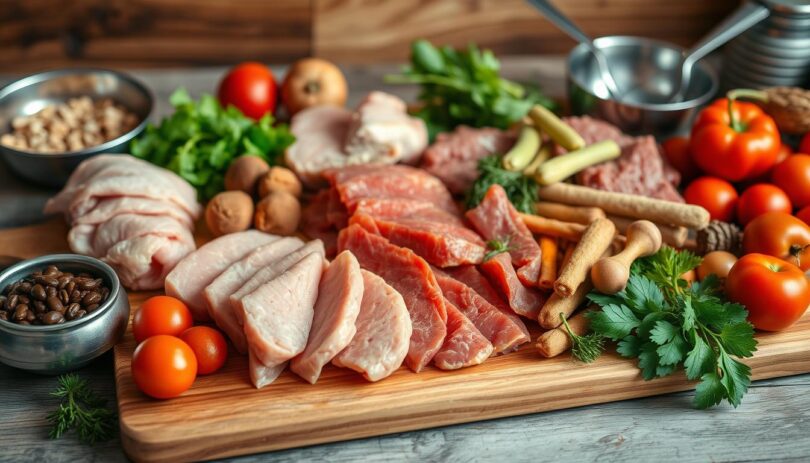
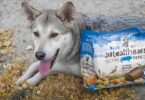
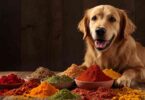

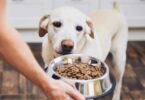



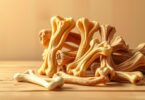
Leave a Comment